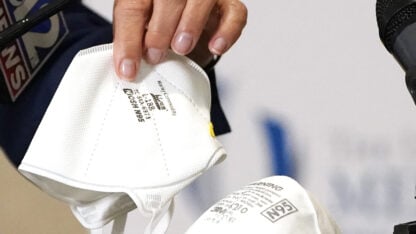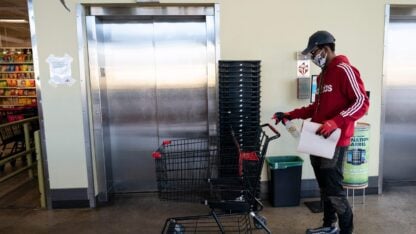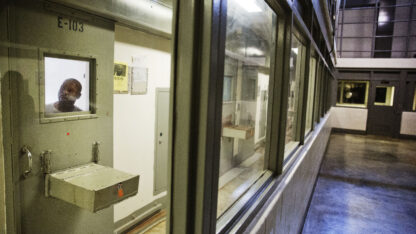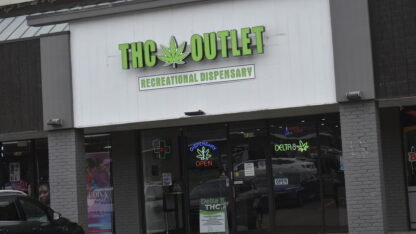Is The U.S. Testing Enough For COVID-19? As Debate Rages On, Here’s How To Know
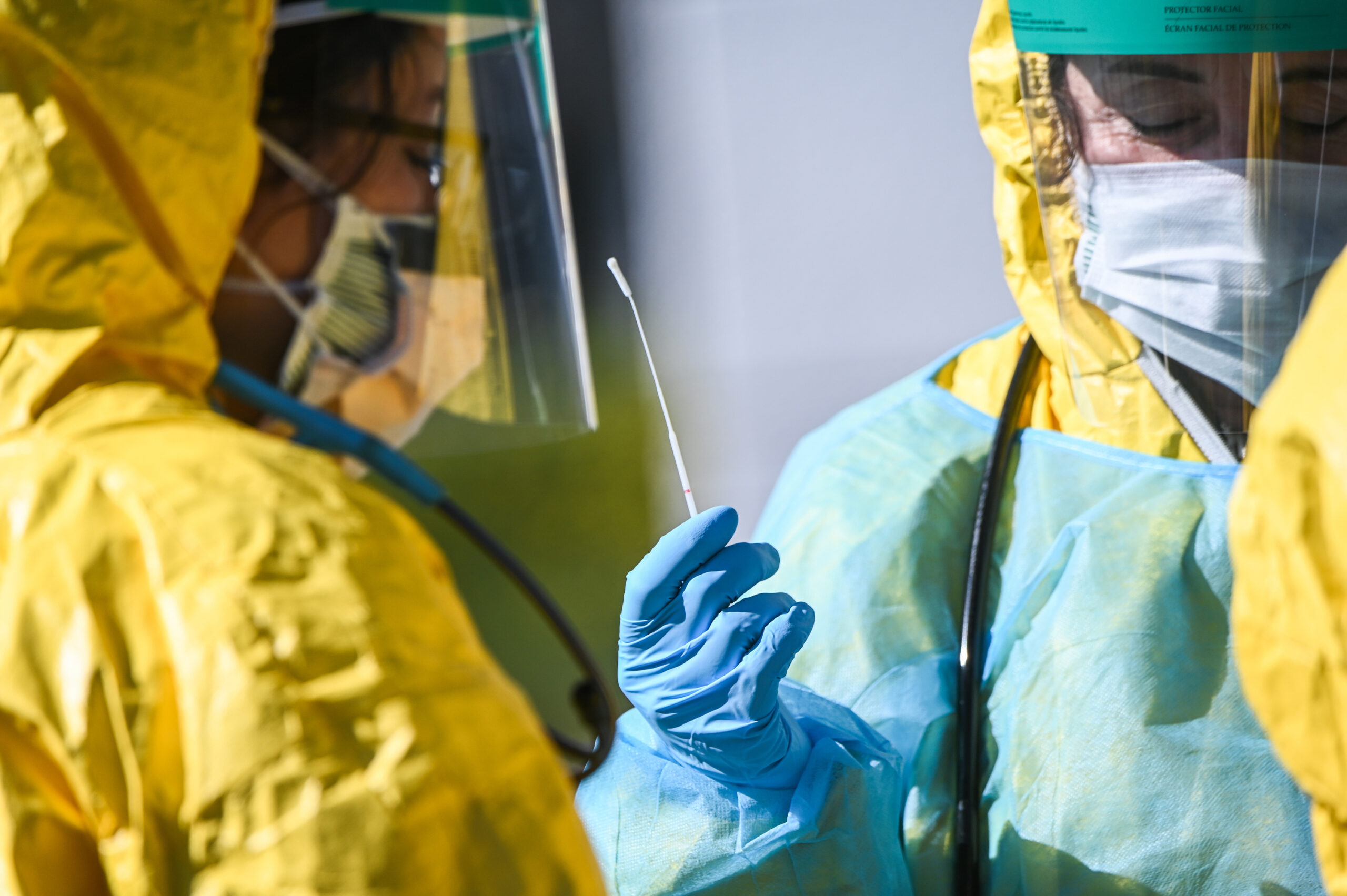
Health care workers hold a swab used for COVID-19 testing at the ProHEALTH testing site in Jericho, N.Y., Tuesday March 24, 2020.
Steve Pfost / Newsday RM via Getty Images
When it comes to testing for COVID-19, there are two competing narratives. The Trump administration claims the U.S. has been doing well and has enough testing capacity.
“By our best estimates, we have enough testing capacity today for every state in America to go to Phase 1,” Vice President Pence said Monday night at a White House press briefing, referring to the administration’s guidelines for gradually reopening the nation.
But many public health officials, hospital administrators and state leaders disagree.
Earlier this week, Maryland Gov. Larry Hogan said during a CNN interview that a lack of testing is a problem and “has been since the beginning of the crisis.” His administration bought 500,000 tests from South Korea to ramp up his state’s testing capacity.
But how much testing is enough? How would state or community leaders know they’re doing enough testing to safely start to lift shelter-in-place restrictions and reopen businesses?
Widespread testing is key to helping communities quickly identify infected people, and trace and isolate their contacts. This strategy can help prevent more waves of illness.
While it’s true that 2.3 million tests have been conducted in the U.S. since the beginning of March, according to the CDC, public health experts say we need much more testing.
There’s no exact number to aim for, but here’s a guiding principle: “You want a [low] percent of your tests to be coming back positive,” says William Hanage, an epidemiologist at Harvard.
He says that figure should be around 10% or perhaps even lower, based on recommendations from the World Health Organization. Why? If a high percentage of tests come back positive, it’s clear there’s not enough testing to capture all of the infected people in the community. “The lower the percentage of tests you’re doing that come back positive, the better,” Hanage says.
Some countries that have done extensive testing, have positive rates near this 10% benchmark, or lower. South Korea is “testing so many people that only 3% of them are positive,” said Rochelle Walensky, an infectious disease specialist at Massachusetts General Hospital, during a livestream hosted by the medical journal, JAMA.
But, so far the U.S. appears to fall short of this benchmark. Nationally, according to CDC data about 18% of tests have been positive to date, and 21% were positive in the week ending April 11. In fact the percent of positives grew that week, in tests from all types of labs — clinical labs, public health labs and commercial labs. Among commercial labs which account for the bulk of the tests, it rose by from about 21% to about 23%.
Among states, the picture is mixed. Some are higher than average, such as Massachusetts which has ranged from a 24% to 31% positive rate in recent days, according to a spokesperson for the health department.
“That means we have an extraordinary high pre-test probability of having disease,” Walensky said of Massachusetts. “And that’s really just because we don’t have capacity to test more.”
The picture is similar in New York. Over the seven days, data from New York state shows about 1 in 3 tests have been positive.
In Georgia, the state has reported more than 88,000 tests with a 23% positive rate. Gov. Brian Kemp announced at a news conference Monday that he’s taking steps to reopen Georgia’s economy, starting this Friday. He cited “favorable data, enhanced testing and approval of our health care professionals.”
Other states are reporting lower positive rates. In Ohio, out of around 91,000 total Covid-19 tests, the state has confirmed nearly 14% to be positive. In South Carolina, a state where the governor issued executive orders on Monday allowing beaches and some retail stores to reopen, the state has documented that about 11% of tests are positive out of more than 41,000 tests. And the proportion of those testing positive for COVID-19 in Florida is 10% of more than 277,000 tests.
Of course, even if a state currently shows a low percentage of positives, infections could still surge in places where testing has been inadequate. The criteria to move to Phase 1 of reopening include a sustained, 14-day decline in new cases COVID-19 and a decline in hospitalizations.
Nationally, testing has increased in recent weeks. According to the CDC, nearly 700,000 tests were completed last week. But the U.S. is not yet near the 10% positive benchmark.
Admiral Brett Giroir, a member of President Trump’s coronavirus task force acknowledged the importance of this benchmark. “This is a good metric that you want to get about one positive for every 10 tests,” he said during the White House Coronavirus Task Force briefing Monday night.
But he also pointed to the need for expanded testing in communities that may have vulnerable populations.
Early on in this epidemic, the priority was to test hospitalized patients and health care workers. Now, there’s a growing recognition that it’s also important to test in higher risk communities, where there may be people infected who may not be symptomatic.
“We are going to focus… on the under-served populations, particularly in inner cities and urban areas,” Giroir said.
He points to multiple factors, including more people doing the kinds of jobs that do not allow them to work from home, crowded conditions and a higher prevalence of underlying health conditions, that may put these communities at higher risk. He also pointed to nursing homes and Native American communities.
Meanwhile, hospital administrators continue to report shortages of the supplies needed to complete COVID-19 tests.
“We’re only able to do approximately 1,000 to 1,200 tests a day because of limitations in supplies like swabs… chemical reagents that actually do the test” said Bruce Meyer of Jefferson Health, which operates 14 hospitals in and around Philadelphia in an interview with NPR Tuesday. “So our capacity to test is really limited.”
Carmel Wroth contributed to this report.
9(MDAxODM0MDY4MDEyMTY4NDA3MzI3YjkzMw004))
